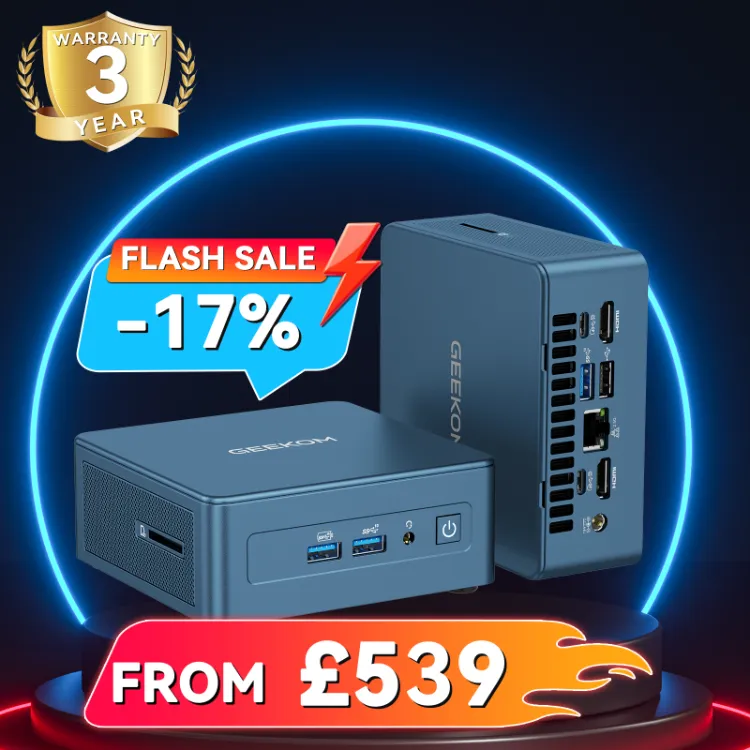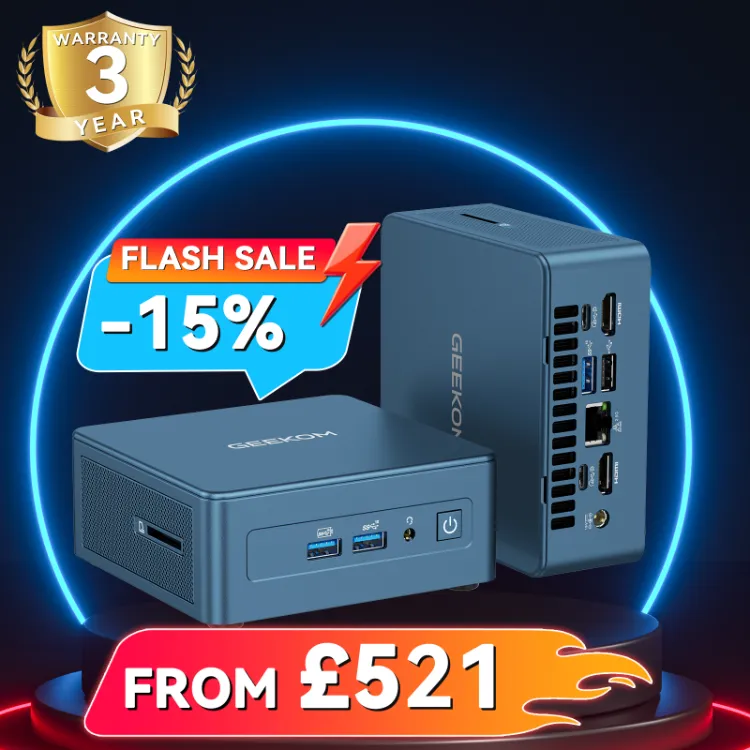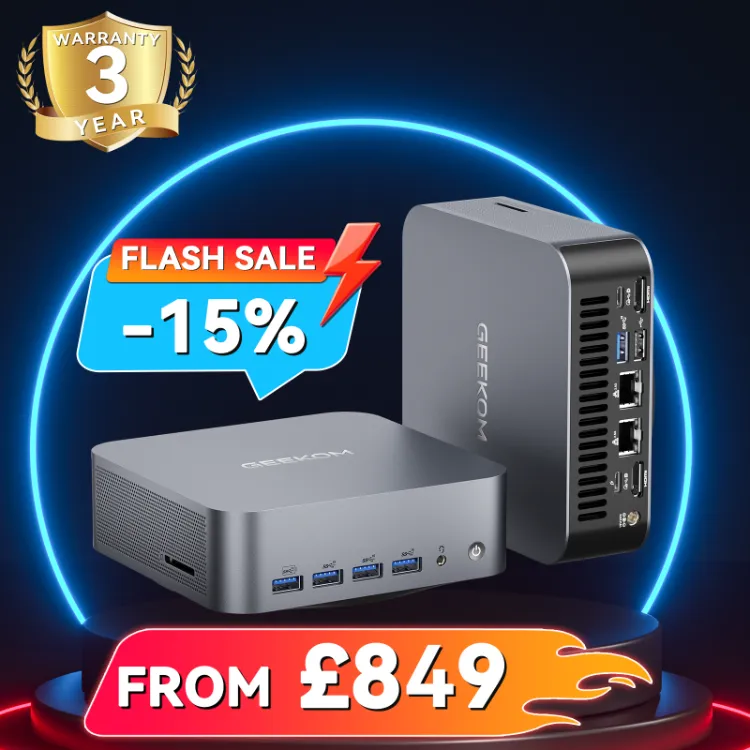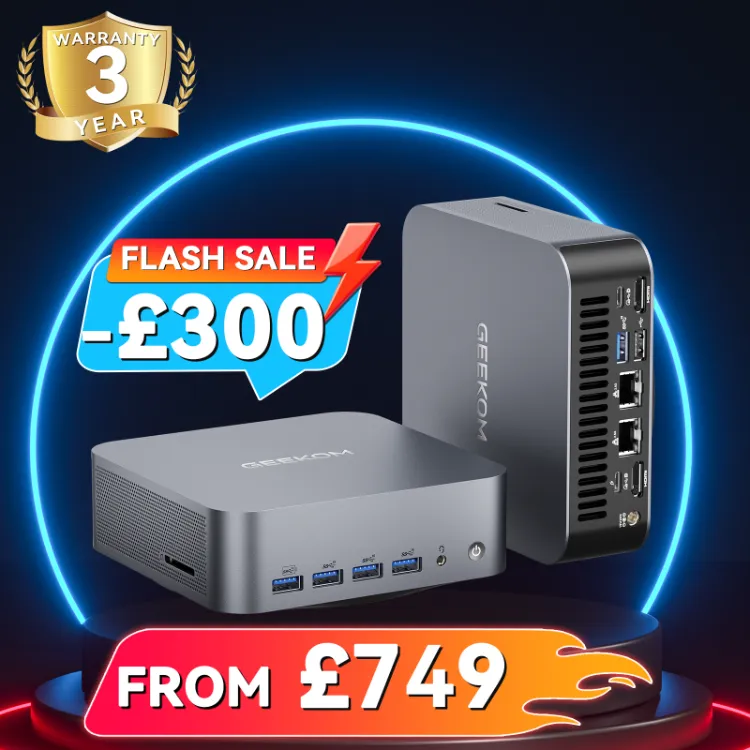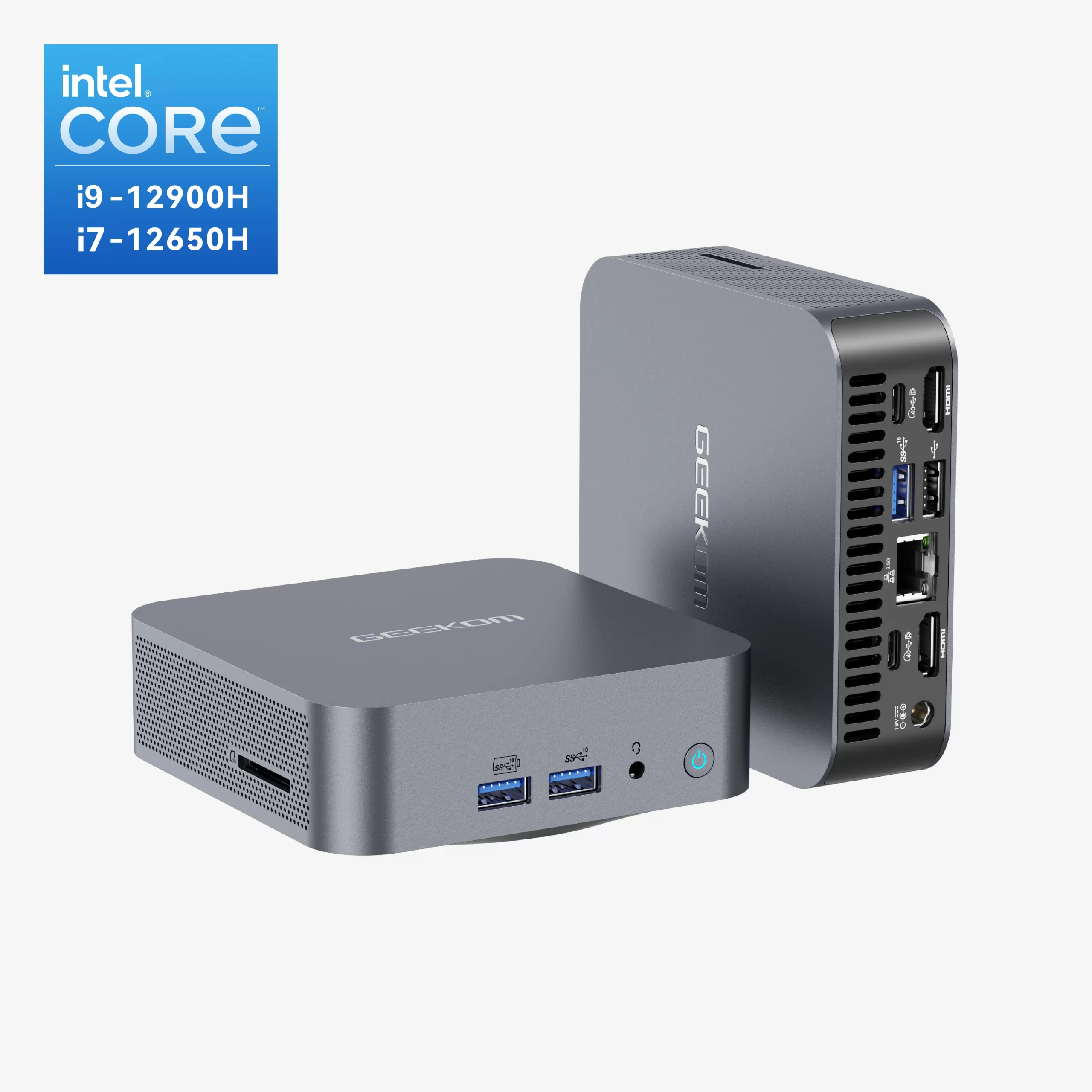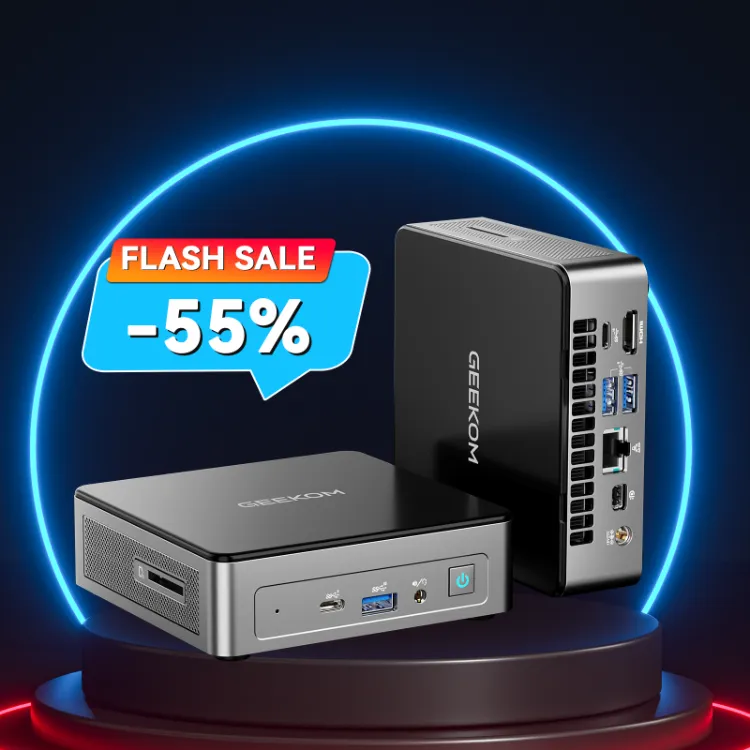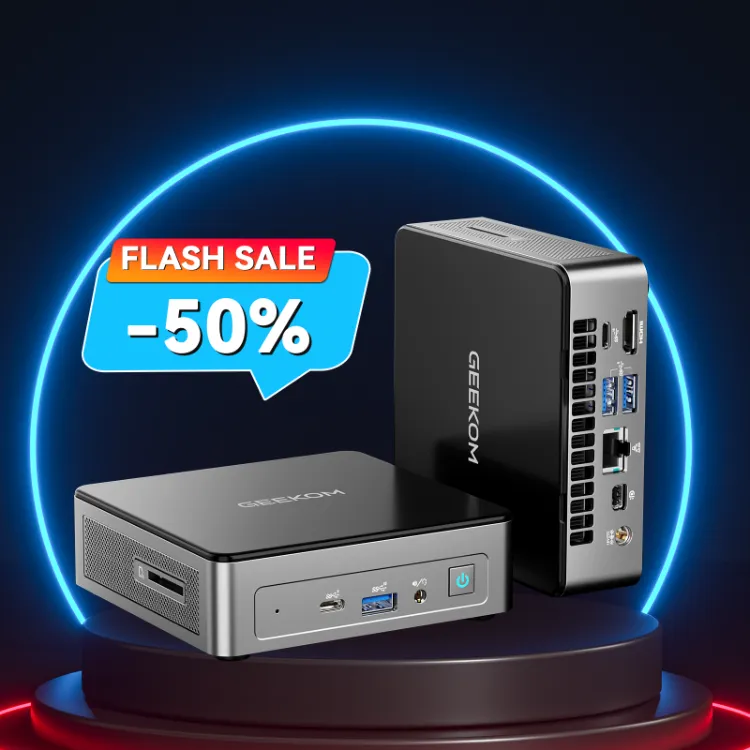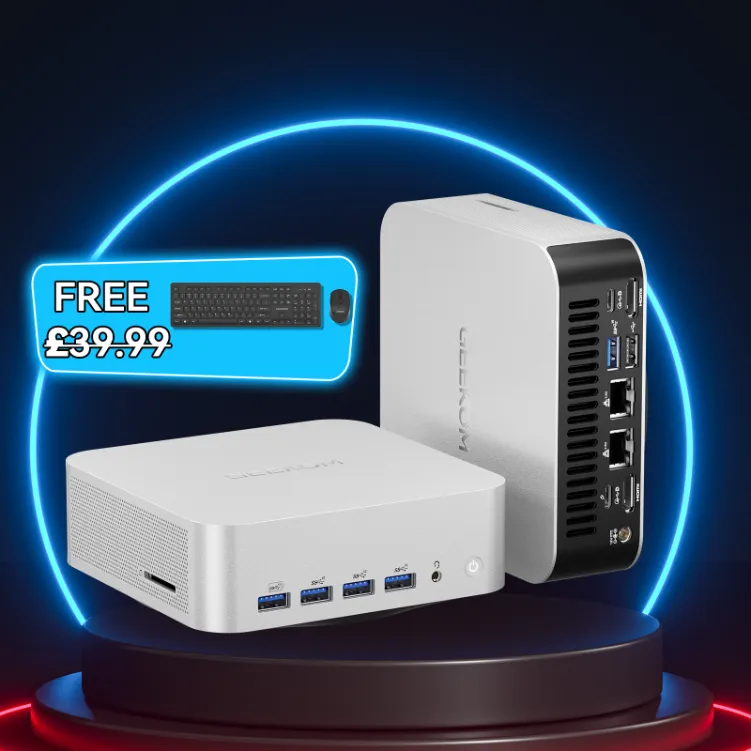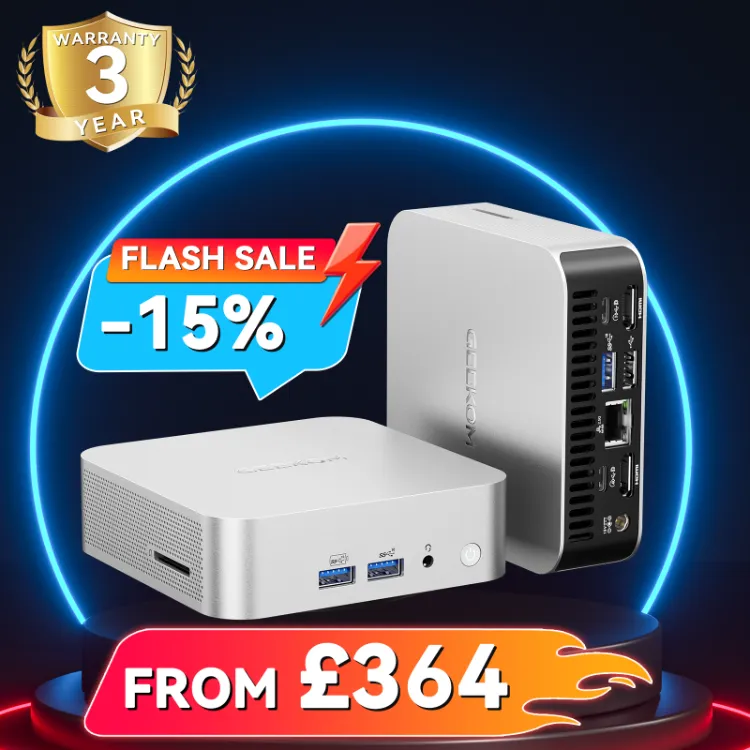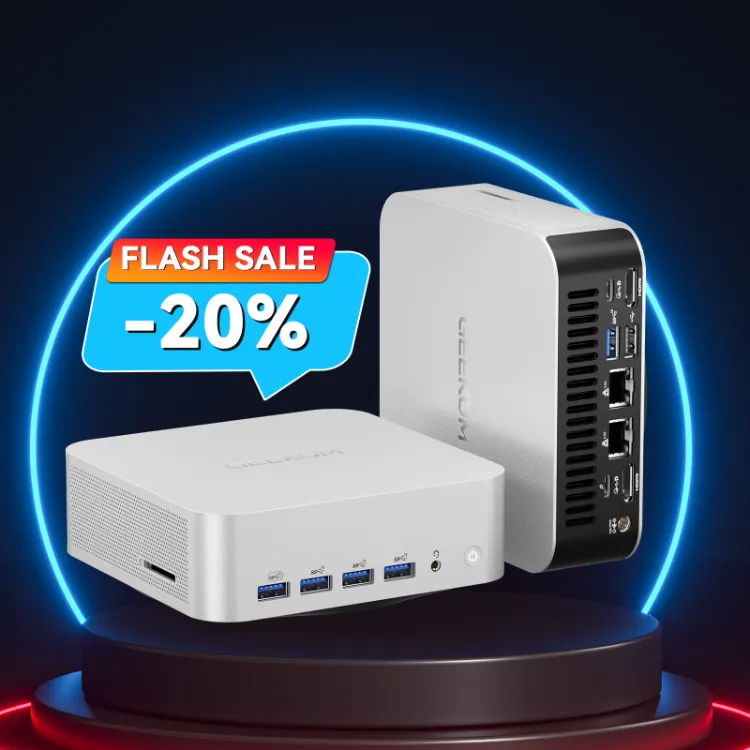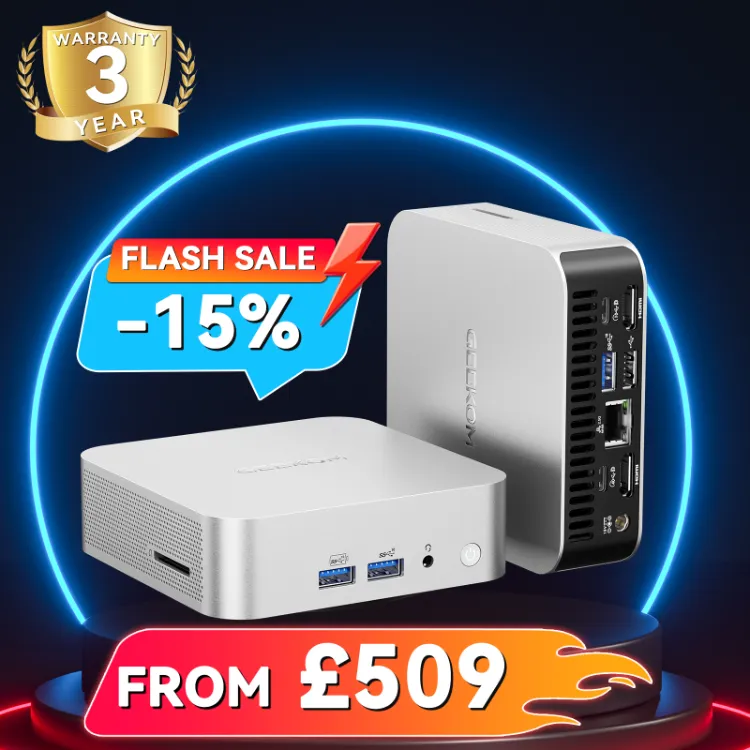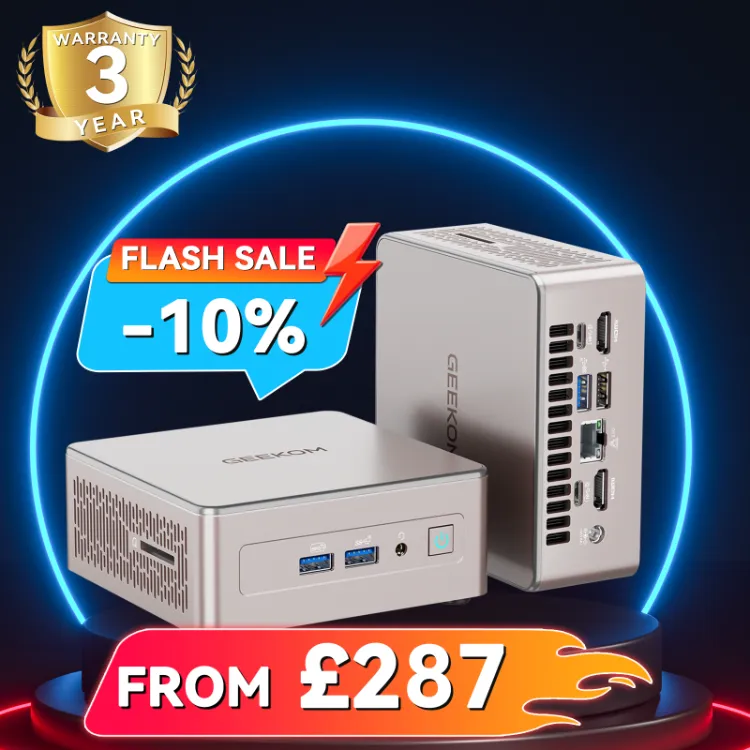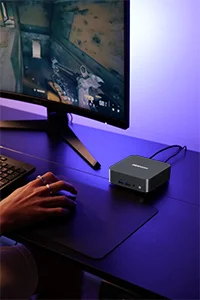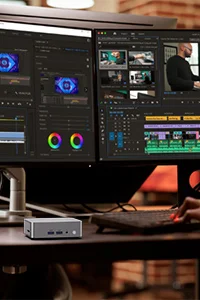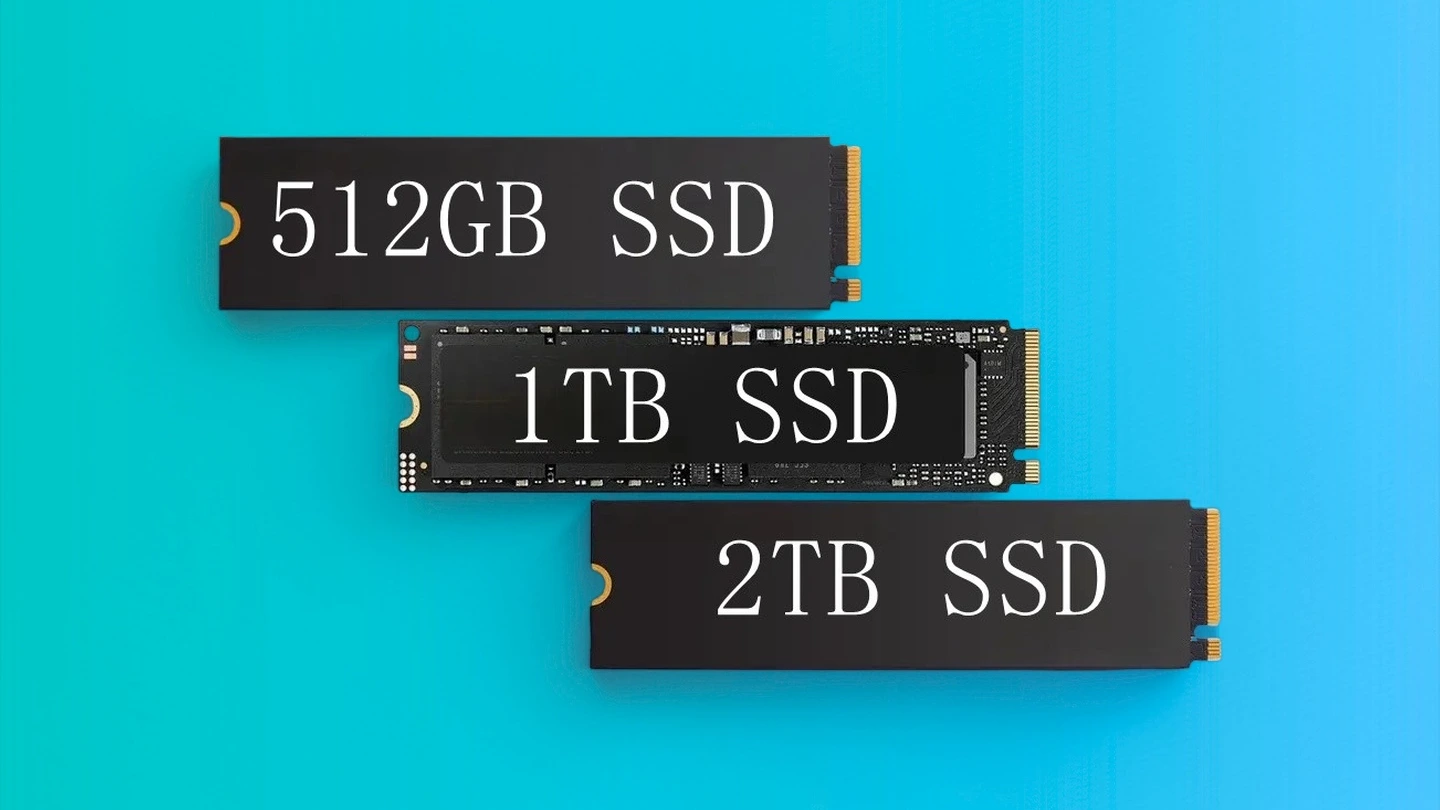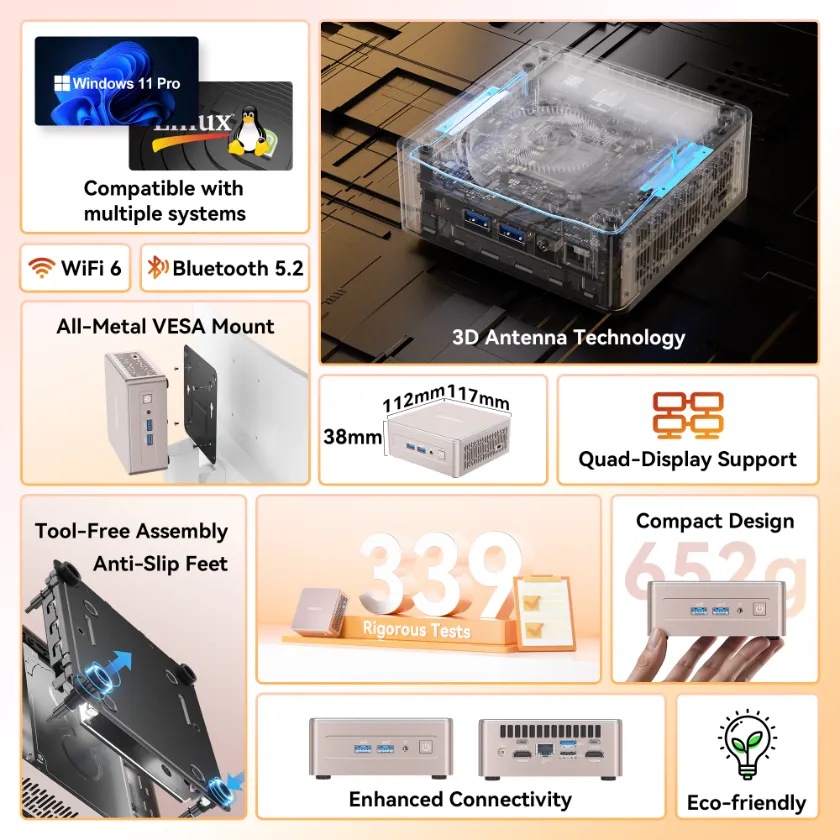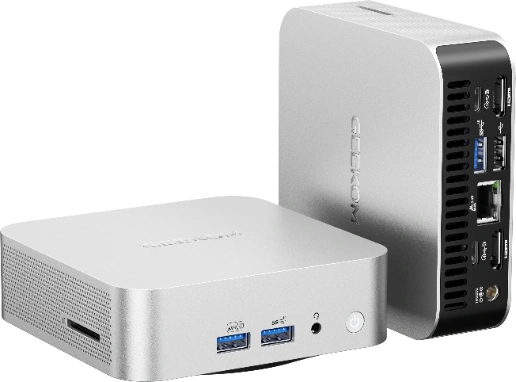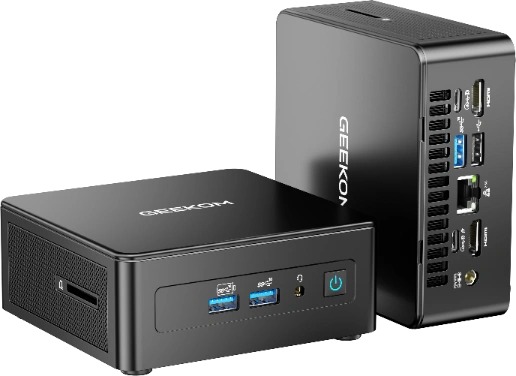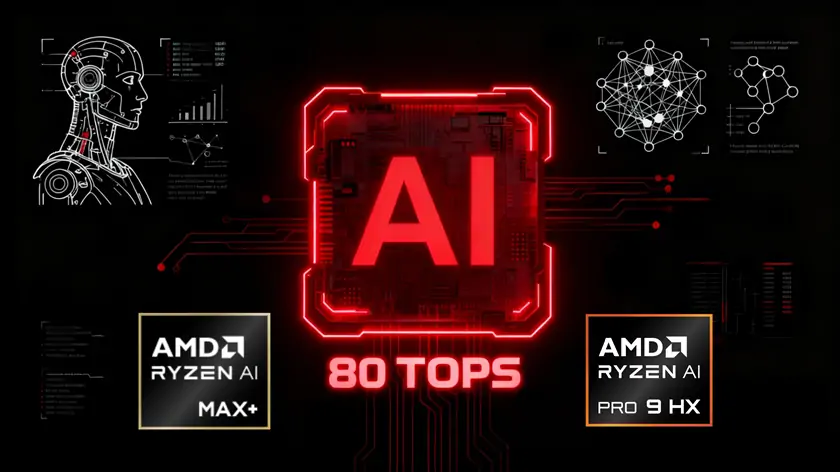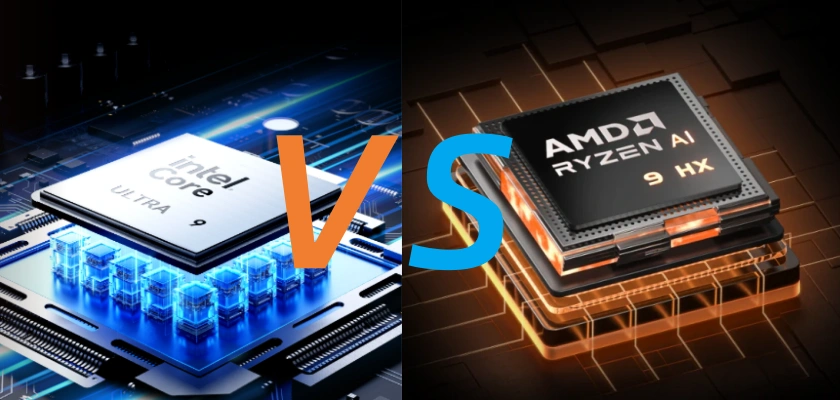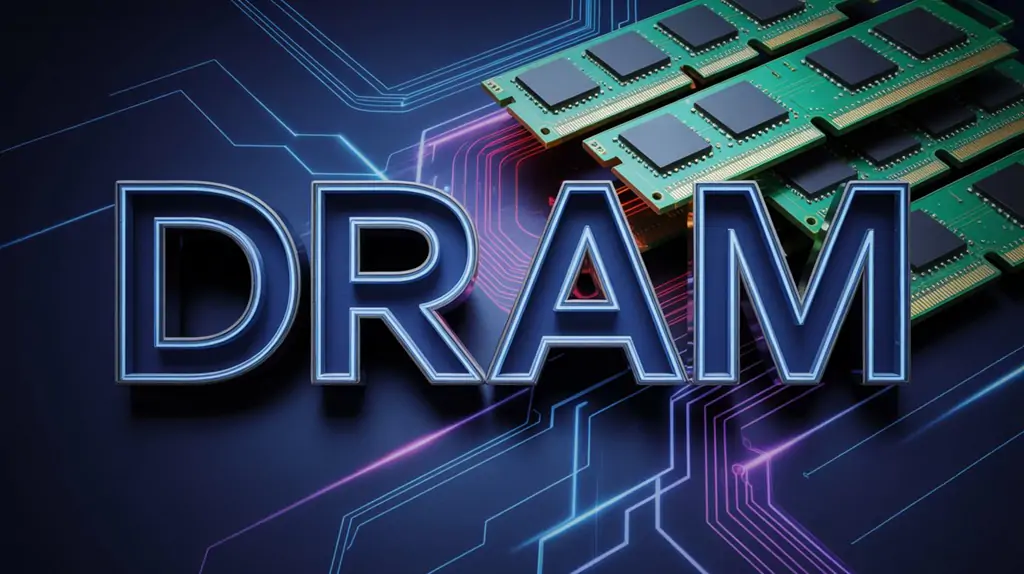Faced with the options available in 2025, it’s not always obvious which SSD to choose. Between everyday use, modern gaming and heavy content creation (4K video or RAW photography), storage needs can vary considerably. Not to mention that game and file sizes continue to increase, making certain capacities quickly insufficient.
Should you settle for 512 GB, opt for a versatile 1 TB or invest in a 2 TB for maximum comfort? In this article, we analyse in detail the advantages, limitations and usage scenarios for each capacity. This way, you can make the choice best suited to your needs and budget.
Understanding the Basics: What is an SSD?
Before even looking at the different capacities, it’s important to understand what an SSD is and how it works. This helps to better assess the impact of size on the performance and longevity of your drive.
Simple Definition and Role of an SSD
An SSD (Solid State Drive) is a storage drive that uses flash memory to record data, unlike traditional hard drives with platters. It offers very fast access times, superior read/write speeds and better shock resistance.
SSDs have become essential for modern PCs. And for good reason—they improve system responsiveness, accelerate boot times, and significantly reduce loading times for applications and games.
Types of SSD (SATA, NVMe, PCIe 4.0/5.0)
There are several types of SSD, depending on the connection and protocol:
- SATA: slower, but compatible with most PCs
- NVMe: fast via M.2
- PCIe 4.0/5.0: ultra-fast, for high-end configurations
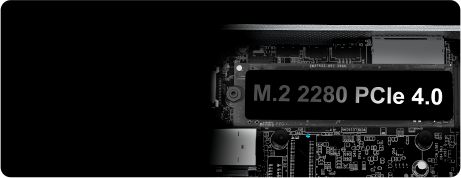
Each of these SSD types directly influences performance, without affecting storage capacity.
Impact of SSD Capacity on Speed and Longevity
As we’ve mentioned, an SSD’s capacity doesn’t just determine storage space, but also directly influences the drive’s speed and lifespan.
1. More Expensive Chips = Faster
A large-capacity SSD (for example 2 TB) generally has a greater number of NAND chips. These chips can be accessed in parallel, rather like multiple lanes on a motorway: the more lanes there are, the faster traffic flows. Result: a 1 TB or 2 TB SSD often offers better write and read speeds than a 512 GB model from the same range.
2. Over-provisioning and Endurance
Manufacturers reserve part of the SSD’s internal space, called over-provisioning, which isn’t visible to the user. This area is used to manage memory cell wear and replace those that become defective. The higher the capacity, the larger this hidden area. This translates to:
- More consistent speeds (fewer drops during long transfers)
- Slower cell wear, therefore increased longevity
3. The Filling Problem
Conversely, an overfilled SSD can see its performance drop. When free space falls below 10 to 15%, the drive controller has to work harder to find available blocks, which slows down writing. This phenomenon is particularly noticeable on 512 GB models, which reach their critical filling threshold more quickly.
4. A Choice That Impacts Reliability
In summary, capacity isn’t just about storage space. It also influences:
- Actual speed over time (especially during large transfers)
- Wear resistance (via TBW and over-provisioning)
- Overall drive reliability, especially if you use your SSD intensively (gaming, video editing, data processing)
Thus, choosing between 512 GB, 1 TB or 2 TB also means thinking about your daily usage and how you’ll fill the drive. A larger model often offers a better compromise between speed and longevity, even if the initial investment is slightly higher.
| Capacity | Speed | Endurance (TBW) | Risk of Decline | Recommended Use |
|---|---|---|---|---|
| 512 GB | Adequate (≈3,000–5,000 MB/s) |
Low (200–300 TBW) |
High | Office work, light use |
| 1 TB | Fast (5,000–7,000 MB/s) |
Medium (400–600 TBW) |
Moderate | Gaming, multimedia |
| 2 TB | Very fast (7,000–10,000+ MB/s) |
High (800–1200 TBW) |
Low | Content creation, workstation |
Common Uses and Storage Needs
To choose the right capacity, it’s important to think about your usage. Indeed, storage needs vary depending on how you use your computer. Let’s look at this more closely.
Office Work and Browsing: How Much Space is Enough?
If you use your computer for internet browsing, office work and streaming, then a 512 GB SSD is generally sufficient. These uses don’t generate very large files and the applications are lightweight. The required space is therefore limited.
Gaming in 2025: Average Game Size (COD, Cyberpunk, etc.)
For modern gaming, you’ll need more space. Indeed, some AAA games exceed 100 GB each. This is the case, for example, with Call of Duty, Cyberpunk 2077 or Assassin’s Creed.
If you want to install several titles without saturating your drive, a 1 TB SSD is often recommended. For demanding gamers or those who also store mods and DLC, using a 2 TB SSD can even be considered for optimal comfort.
Content Creation (4K Video, RAW Photos, Audio Editing)
If you create content and work with large files, then you’ll need lots of space and speed. 4K video, RAW photography or audio editing quickly generate dozens, even hundreds of GB.
For this creative use, a 1 to 2 TB SSD is advised. This will avoid saturating your drive whilst offering smooth work with fast access times.
IT Professionals and Data: Database, VM, Development Needs
Developers, database administrators and virtual machine (VM) users also need significant capacity. Complex projects and test environments can quickly fill an SSD.
In this case, an SSD with 1 to 2 TB ensures sufficient margin to work efficiently without experiencing slowdowns.
SSD 512 GB: For Whom and For What?
Often considered an entry-level solution, the 512 GB SSD offers the speed of an SSD without requiring a significant investment. It’s particularly suitable for users with moderate needs. Its advantages are diverse:
- Attractive and accessible price
- Sufficient for office work and remote working
- Fast system startup and efficient application launching
- Notable performance improvement: particularly compared to a traditional hard drive
Whilst it has certain advantages, the 512 GB SSD also has certain limitations that are important to know. For example, for demanding gamers or content creators, the limited remaining space can be problematic. Installing several AAA games or working with 4K video, audio or RAW photo files can very quickly saturate the drive. Professionals or multimedia enthusiasts will often have to free up space or use external storage.
On the other hand, for a student, an office user or a secondary computer owner, a 512 GB SSD is more than sufficient. For minimalist users who rely on the cloud or an external SSD, this capacity can also be suitable.
In any case, this model remains an economical and efficient choice for everyday and light usage. It offers a smooth experience without extra cost. It’s precisely to meet this type of daily use, without excess storage but with optimal fluidity, that models like the GEEKOM A5 with 512 GB SSD make perfect sense.
GEEKOM A5 2025 Edition Mini PC
- The GEEKOM A5 Mini PC is perfect for office, educational, and lab use
- 339 rigorous tests:Tested through 339 rigorous tests, it has over five years of stable operation.
- Dual-copper heatpipes: IceBlast 2.0 cooling system for efficient and quiet operation.
- Sturdy Metal Frame: Can withstand up to 440 lbs (200 kg) of pressure, ultimate stability and long-lasting durability.
- Pre-installed with Windows 11 Pro, ready to use
Thanks to its dual storage slot design, the GEEKOM A5 isn’t limited to its original 512 GB. It’s equipped with an M.2 2280 PCIe Gen 3×4 NVMe/SATA SSD slot that can accommodate up to 2 TB, as well as a 2.5″ SATA HDD slot also supporting up to 2 TB. In other words, with a single Mini PC, you can enjoy a total capacity of up to 4 TB, equivalent to a compact data centre, without having to invest in multiple machines.
SSD 1 TB: The Balanced Choice
The 1 TB SSD often represents a compromise between capacity, price and performance. It meets a wide variety of needs, from everyday use to more demanding activities like modern gaming or content creation.
Here’s an overview of its main advantages:
- Sufficient capacity for most uses: office work, gaming, photo/video
- High performance: particularly thanks to most modern NVMe and PCIe SSDs
- Versatility: a single drive is generally enough for storing the system, applications and several games or multimedia projects
- Good value for money: for those who want more space without necessarily going for the high-end option
Even though a 1 TB SSD suits most users, it can become insufficient for creators working on very large projects, such as multiple 4K videos or large RAW photo libraries, among others. Avid gamers can also quickly reach the limit, particularly if several AAA titles are installed simultaneously.
In these situations, it’s preferable to opt for external storage or a 2 TB SSD. However, if you’re among versatile users, the 1 TB SSD is ideal for several uses. For an average gamer, it allows you to install between 5 and 8 AAA games without any problems.
If you’re an amateur photo or video creator, you can manage several projects without saturating the drive. Finally, if you’re an office professional or student, you’ll benefit from comfortable margin for your files and applications.
In 2025, a 512 GB SSD sells for around £30 on average, whilst a 1 TB model costs around £57, which is a similar or slightly lower price per GB. This capacity thus offers an excellent compromise between available space, performance and budget. It allows you to install several games, applications and multimedia files without breaking the bank.
The 1 TB quickly becomes the recommended choice for the majority of users looking for a reliable, versatile SSD suited to various uses, from remote working to moderate gaming.
It’s within this logic of balance between versatility and power that a mini PC like the GEEKOM A8, equipped with a 1 TB SSD and a high-performance processor, positions itself as a particularly relevant option for gamers and creators.
GEEKOM A8 AI Mini PC
- 8945HS processor with a boosted NPU deliver up to 39 TOPS
- The all-metal casing and frame are pressure-tested up to 200 kg for drop and impact resistance
- Equipped with a dual copper heat pipe cooling system, our A8 ensures twice the heat dissipation efficiency
- Rich interfaces: 6 USB ports (including 2 × USB4 ports), SD card reader, worry-free expansion
- Pre-installed with Windows 11 Pro, support Linux and Ubuntu
The GEEKOM A8 indeed integrates a PCIe Gen 4×4 SSD slot capable of supporting up to 2 TB of storage. This means that even if you start with a 1 TB configuration, you can easily double your capacity, reaching 2 TB in total to store your AAA games, heavy creative projects or your multimedia libraries.
SSD 2 TB: The High-End Solution
A high-end solution, the 2 TB SSD is intended for users with significant storage needs, whether for gaming, content creation or professional work with large files. It offers comfortable space whilst maintaining the high performance characteristic of modern NVMe and PCIe SSDs.
Among its advantages, we can cite:
- Large capacity: perfect for installing numerous AAA games, photo libraries or 4K videos
- Stable performance: with its larger over-provisioning, speed remains constant even if the drive is more than 80% full
- Versatility for professionals: it allows managing virtual machines, large databases or development projects without space constraints
Its main disadvantage remains the price, which is around £125 in 2025—a slightly higher cost per GB than 1 TB or 512 GB models. This model is therefore less suitable for users with modest needs or a limited budget.
Regarding uses, it offers excellent performance. Particularly for passionate gamers, who can easily install all recent games and DLC without running out of space. For professional content creators, again, video editing, high-resolution photo retouching or intensive audio production can all fit on the 2 TB SSD. And for professionals, it allows storage of databases, virtual machines and complex projects.
In summary, the 2 TB SSD represents the high-end solution. It offers comfort, versatility and stable performance for those who need lots of space and speed.
In this high-end category, a mini PC like the GEEKOM IT15, equipped with a 2 TB SSD and designed for heavy loads, perfectly illustrates this level of requirement. It meets the needs of both professional creators and passionate gamers looking for a machine ready for anything.
GEEKOM IT15 AI Mini PC
- Intel® Core™ Ultra 9-285H processor and Intel® Arc™ 140T graphics, delivering up to 99 TOPS of AI computing power
- 2.5G Ethernet port, intel® Bluetooth® 5.4 and Wi-Fi 7
- Innovative and efficient cooling system – IceBlast 2.0
- 339 rigorous tests:Tested through 339 rigorous tests, it has over five years of stable operation.
- New lockable VESA mount securely attaches to surfaces and offers expanded usage scenarios.
For storage, the GEEKOM IT15 features an NVMe Gen 4×4 SSD capable of reaching 2 TB, guaranteeing both lightning-fast speeds and large capacity for your demanding projects. Combined with its Intel Core U5-225H / U9-285H processors and Intel Arc GPU with ray tracing support and XeSS technology, it offers a complete machine capable of handling advanced 3D gaming as well as high-level professional creation.
Factors to Consider Before Buying
Before choosing your SSD, you should consider several factors, such as:
- Budget: In 2025, price varies mainly according to capacity, ranging from £30 (512 GB) to £125 (2 TB).
- Scalability: Think about anticipating your future needs. Check the number of M.2 slots available on your motherboard or mini PC, as well as compatibility with different formats (2280, 2230, etc.). Some devices allow you to easily add a second SSD or replace an existing model, which can save you from a premature upgrade.
- Performance: Not all SSDs are equal. For basic use (browsing, office work), a SATA III SSD remains sufficient and economical. On the other hand, for gaming or heavy content creation (4K/8K video editing, 3D rendering, generative AI), favour an NVMe SSD in PCIe 4.0 or even PCIe 5.0, capable of reaching more than 10,000 MB/s in reading. This speed difference translates to almost instant loading times and increased productivity.
- Lifespan: An often overlooked but crucial aspect. SSD capacity directly influences TBW (Total Bytes Written), i.e., the total amount of data that can be written before wear. For example, a 2 TB SSD offers on average a TBW 3 to 4 times higher than a 512 GB model. DWPD (Drive Writes Per Day) is another key indicator: the higher the value, the more the SSD will withstand intensive daily use. For professionals handling large volumes of data, opting for a high-endurance model is a profitable investment.
By taking these criteria into account—price, scalability, performance and durability—you’ll be able to select the SSD best suited to your uses, whether for a laptop, mini PC or high-end workstation.
2025 Comparison: 512 GB vs 1 TB vs 2 TB
To give you a clearer idea of the strengths and limitations of each SSD capacity, here’s a comparative table for 2025:
| Capacity | Average Price (£) | AAA Games Installable | Recommended Use | Value for Money |
|---|---|---|---|---|
| 512 GB | 30 | 1 to 2 | Office work, light use | Good for small budgets |
| 1 TB | 60 | 5 to 8 | Versatile: office work, moderate gaming, amateur video editing | Excellent compromise |
| 2 TB | 125 | 10+ | Intensive gaming, professional content creation, IT use | High-end (more expensive per GB) |
GEEKOM A9 Max: The Ultimate Storage Reference
The GEEKOM A9 Max offers massive storage potential with two NVMe M.2 PCIe Gen 4×4 SSD slots:
- 1 × M.2 2280 — up to 4 TB
- 1 × M.2 2230 — up to 4 TB
- Total possible capacity: up to 8 TB
Designed for AAA game libraries, 8K video creation or intensive IT environments, the A9 Max combines:
- AMD Ryzen™ AI 9 HX 370 processor (TDP 54 W)
- Up to 128 GB DDR5 RAM
- Radeon™ 890M graphics with AI acceleration
- A compact mini PC, designed as a high-end workstation
The Ultimate Storage Reference
Storage Configuration
Core Specifications
Ideal Use Cases
Form Factor
Conclusion
In summary, a 512 GB SSD suits basic uses and small budgets. The 1 TB SSD offers a versatile compromise suitable for the majority of mini PC users. Finally, the 2 TB SSD ensures comfort and performance for intensive needs. To avoid unnecessary expense and for optimal comfort, choose your SSD according to your profile and budget. Consider supplementing your storage with cloud or an external SSD for more flexibility and data security.



